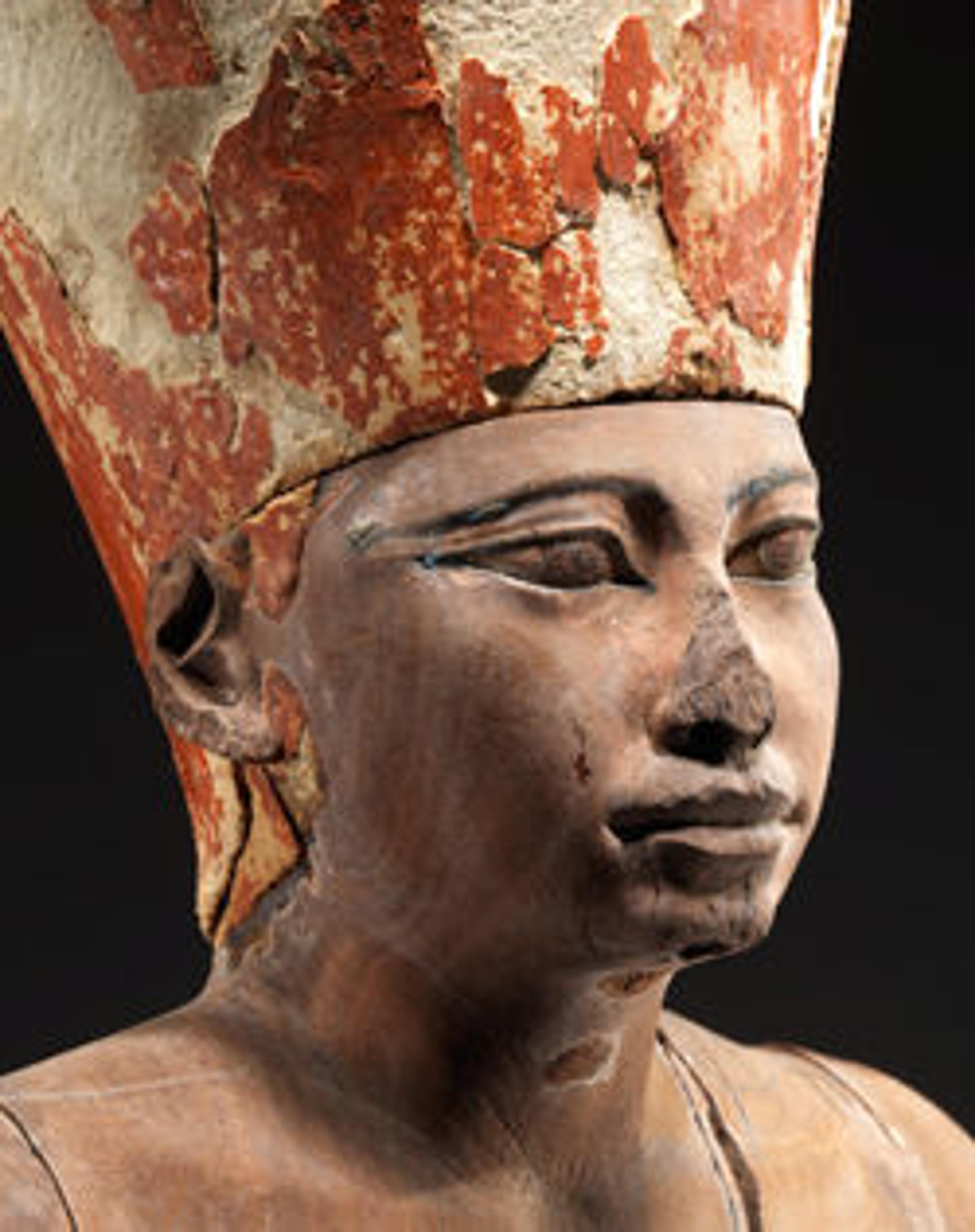Classic Kerma Beaker
The bell-shaped Kerma beaker is a hallmark of the Classical Kerma civilization. Found stacked together in tombs in groups of as many as seven, the Kerma beaker is the most common form of classic Kerma ware. The outgrowth of a long Nilotic tradition of black-topped red polished ware, these delicate, thin-walled vessels mark a zenith in ceramic technology. Their production required a highly controlled kiln temperature and atmosphere. Formed by hand, each pot was covered with red ocher and polished before firing. To achieve the black top and interior, the vessels were inverted in a combustible material to create a reducing atmosphere during firing. The irregular opalescent band between the black and red surfaces seems to be a glazelike material that was painted on before firing. These graceful, finely modeled cups, with their highly polished surface and opalescent ring, are among the greatest works of ceramic art.
This beaker was found in a grave at the Egyptian site of Abydos. Classic Kerma ware has been found in a number of tombs in Egypt dating from the late Middle Kingdom to the early New Kingdom (ca. 1785–1500 B.C.). These tombs generally contain both Kerma ceramics and Egyptian goods. Although it is not certain that the owners of these tombs were Nubians, it is quite possible that they represented traders, originally from Kerma, who had taken up residence in Egypt.
This beaker was found in a grave at the Egyptian site of Abydos. Classic Kerma ware has been found in a number of tombs in Egypt dating from the late Middle Kingdom to the early New Kingdom (ca. 1785–1500 B.C.). These tombs generally contain both Kerma ceramics and Egyptian goods. Although it is not certain that the owners of these tombs were Nubians, it is quite possible that they represented traders, originally from Kerma, who had taken up residence in Egypt.
Artwork Details
- Title: Classic Kerma Beaker
- Period: Middle Kingdom
- Dynasty: Dynasty 13
- Date: ca. 1802–1640 B.C.
- Geography: From Egypt, Northern Upper Egypt, Abydos, Tomb 525, Garstang excavations 1908
- Medium: Pottery
- Dimensions: H. 10.8 cm (4 1/4 in.); Greatest diam. 14.2 cm (5 9/16 in.)
- Credit Line: Rogers Fund, 1920
- Object Number: 20.2.45
- Curatorial Department: Egyptian Art
More Artwork
Research Resources
The Met provides unparalleled resources for research and welcomes an international community of students and scholars. The Met's Open Access API is where creators and researchers can connect to the The Met collection. Open Access data and public domain images are available for unrestricted commercial and noncommercial use without permission or fee.
To request images under copyright and other restrictions, please use this Image Request form.
Feedback
We continue to research and examine historical and cultural context for objects in The Met collection. If you have comments or questions about this object record, please contact us using the form below. The Museum looks forward to receiving your comments.
